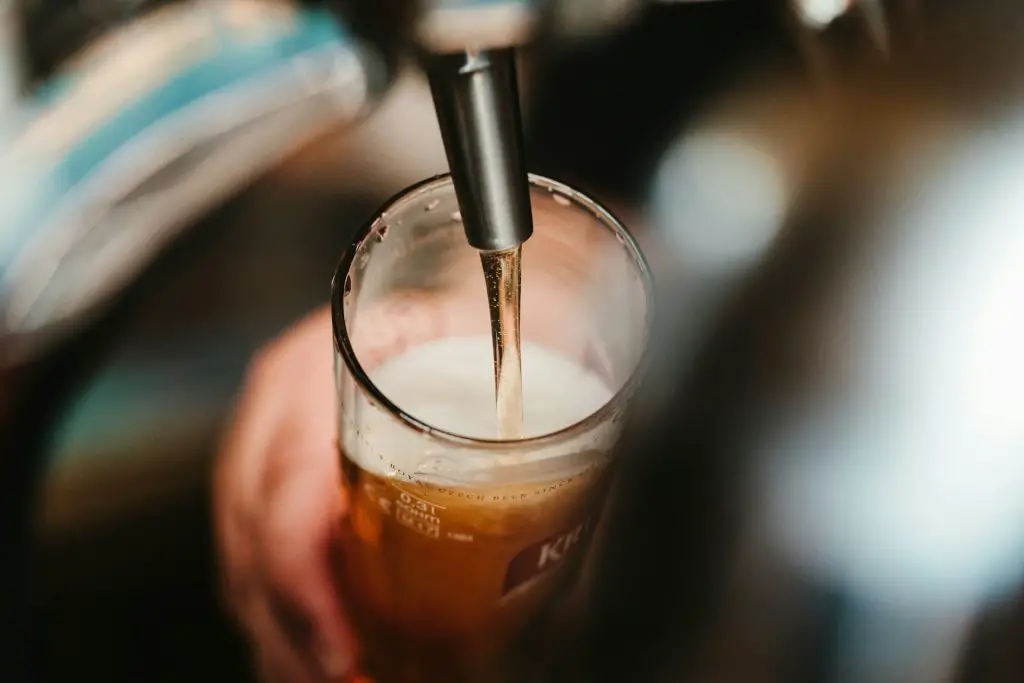The art of brewing beer at home has been practiced for centuries, dating back to ancient civilizations. Today, homebrewing has experienced a resurgence in popularity, with enthusiasts and novices alike trying their hand at crafting their own unique brews. Brewing beer at home is not only a rewarding hobby but also an opportunity to explore your creativity and experiment with different flavors and styles. In this comprehensive guide, we will take you through the step-by-step process of brewing your own beer, from selecting ingredients to bottling and beyond.
Getting Started
Equipment and Supplies
Before diving into the brewing process, it’s essential to gather all the necessary equipment and supplies. Here’s a list of the basic items you’ll need:
Large brew kettle (8-10 gallons)
Fermentation vessel (glass carboy or food-grade plastic bucket)
Airlock and stopper
Thermometer
Hydrometer and test jar
Sanitizing solution
Bottles, caps, and a capper
Brewing spoon
Ingredients (malt extract, hops, yeast, and water)
1.2. Understanding the Ingredients
To brew beer, you’ll need to become familiar with the primary ingredients that make up your recipe:
Malt Extract: Malt extract is the sweet, concentrated liquid derived from malted barley. It provides the sugars necessary for fermentation and comes in various forms, including liquid and dry.
Hops: Hops are flowers that add bitterness, aroma, and flavor to your beer. Different hop varieties can impart various characteristics to your brew.
Yeast: Yeast is a microorganism responsible for fermenting the sugars in the malt extract, converting them into alcohol and carbon dioxide. There are various yeast strains available, each with its unique characteristics.
Water: High-quality water is crucial for brewing. Tap water is suitable in many cases, but you may need to adjust its mineral content depending on your recipe.
The Brewing Process
Choosing a Recipe
Start your homebrewing journey by selecting a recipe that matches your taste preferences and skill level. You can find a vast array of recipes online, in books, or from fellow homebrewers. Beginner-friendly recipes typically use malt extract, which simplifies the brewing process.
Sanitization
Maintaining a clean and sanitized brewing environment is paramount to preventing contamination. Clean all your equipment thoroughly, and then sanitize it using a food-grade sanitizing solution. Pay extra attention to anything that will come into contact with the beer post-boil.
Brewing Day
On the day you plan to brew, follow these steps:
Heat water in your brew kettle to a specified temperature, usually around 150-160°F (65-71°C).
Add your malt extract to the hot water, stirring continuously to prevent clumping.
Bring the mixture to a boil and add hops at various intervals to achieve desired bitterness, flavor, and aroma.
After boiling for the prescribed time (typically 60-90 minutes), cool the wort rapidly by immersing the kettle in an ice bath or using a wort chiller until it reaches around 70°F (21°C).
Fermentation
Pitching Yeast
Once your wort is cooled, transfer it to your fermentation vessel, leaving some space at the top. Pitch the yeast into the wort, ensuring it’s evenly distributed.
Fermentation Process
Fermentation is the magical process where yeast consumes the sugars in the wort and converts them into alcohol and carbon dioxide. Here’s how it works:
Seal the fermentation vessel with an airlock and stopper to allow gases to escape while preventing contaminants from entering.
Place the vessel in a cool, dark area with a consistent temperature. Different yeast strains have different temperature preferences, so follow your recipe’s guidelines.
Fermentation can take anywhere from a few days to several weeks, depending on the beer style and yeast used. Monitor the airlock to gauge activity.
Bottling and Carbonation
Preparing for Bottling
Before bottling, ensure that your bottles, caps, and equipment are thoroughly cleaned and sanitized. You’ll also need to prepare a priming solution—a mixture of sugar and water—to carbonate your beer.
Bottling Day
The bottling process involves the following steps:
Siphon the beer from the fermentation vessel into a bottling bucket, leaving behind any sediment (trub) at the bottom of the fermenter.
Gently mix the priming solution into the beer to ensure even carbonation.
Fill each bottle with beer using a bottle filler or siphon. Leave some space at the top to allow for carbonation.
Cap the bottles using a capper or crown caps.
Aging and Enjoyment
Aging
After bottling, your beer will need some time to carbonate and mature. Place the bottles in a cool, dark place and let them sit for at least two weeks, although some beer styles benefit from longer aging.
Tasting and Adjusting
Once the aging period is over, crack open a bottle and savor your creation. Take notes on the flavor, aroma, and overall impression. If you find that your beer needs adjustments, you can experiment with different recipes, ingredients, or brewing techniques in your next batch.
Tips and Troubleshooting
Tips for Success
Keep detailed records of your brewing process, including ingredients, temperatures, and fermentation times. This will help you replicate successful batches and improve your brewing skills.
Experiment with different hop varieties, yeast strains, and adjuncts to create unique flavor profiles.
Join a homebrewing club or online community to connect with other brewers, share experiences, and gain valuable insights.
Troubleshooting Common Issues
Off-flavors: If your beer has undesirable flavors or aromas, research common off-flavors and their causes to identify and address the issue.
Infection: If you suspect contamination, thoroughly clean and sanitize your equipment, and consider using a different fermentation vessel or airlock.
Poor Carbonation: If your beer lacks carbonation, ensure you added the correct amount of priming sugar and allowed enough time for conditioning.
Homebrewing is a fascinating and rewarding hobby that allows you to craft your own unique beer creations. While this guide provides a comprehensive overview of the brewing process, remember that practice makes perfect. Don’t be discouraged by initial setbacks; instead, use them as opportunities to learn and improve your skills. With dedication and creativity, you can become a skilled homebrewer and delight in the joy of sharing your handcrafted beers with friends and family. Cheers to your brewing journey!
Advanced Brewing Techniques
All-Grain Brewing
While many beginners start with malt extract brewing, more advanced homebrewers often transition to all-grain brewing. In this method, you begin with raw grains (usually malted barley) and convert them into sugar through a mashing process. All-grain brewing offers greater control over your beer’s flavor and characteristics, but it requires more equipment and knowledge of mashing techniques.
Recipe Formulation
As you gain experience in homebrewing, you’ll develop a deeper understanding of ingredients and their interactions. This knowledge will allow you to create your own beer recipes tailored to your preferences. Experiment with different grains, hops, yeast strains, and adjuncts to craft unique and innovative brews.
Temperature Control
Consistent temperature control during fermentation is crucial for achieving the desired flavor profile in your beer. Advanced homebrewers invest in temperature-controlled fermentation chambers or refrigerators to maintain precise temperatures throughout the fermentation process. This level of control can make a significant difference in the quality of your beer.
Scaling Up and Homebrewing Communities
Scaling Up
As your passion for homebrewing grows, you might consider scaling up your operations. This could involve investing in larger equipment, brewing more substantial batches, or even considering the possibility of starting a small microbrewery. However, remember that scaling up also requires a greater commitment of time and resources.
Homebrewing Communities
Homebrewing is a hobby best enjoyed with like-minded individuals. Consider joining a local homebrewing club or online community where you can share your experiences, exchange recipes, and participate in brewing competitions. These communities provide valuable support and camaraderie, helping you grow as a brewer.
Legal and Safety Considerations
Legal Regulations
Before distributing or selling your homebrewed beer, it’s essential to understand the legal regulations governing alcohol production in your area. Many regions have specific laws and permits for homebrewers, and these can vary widely. Familiarize yourself with the rules and regulations to ensure compliance.
Safety Precautions
Homebrewing involves working with hot liquids, chemicals, and potentially pressurized containers. It’s crucial to prioritize safety by wearing appropriate protective gear, following best practices, and taking necessary precautions to prevent accidents or injuries during the brewing process.
Inspiration
Homebrewing your own beer is a rewarding and creative journey that allows you to explore the art and science of brewing. While the process may seem daunting at first, the sense of accomplishment and the opportunity to enjoy your handcrafted brews make it all worthwhile.
Remember that the key to becoming a skilled homebrewer is practice, experimentation, and a commitment to continuous improvement. As you gain experience and confidence, you’ll find that the possibilities are endless, and your brewing skills will only continue to grow.
Whether you choose to brew for personal enjoyment, share your creations with friends and family, or even dream of turning your hobby into a small business, the world of homebrewing offers endless possibilities for exploration and creativity. So, raise a glass to your brewing journey and enjoy the wonderful world of homemade beer! Cheers!




